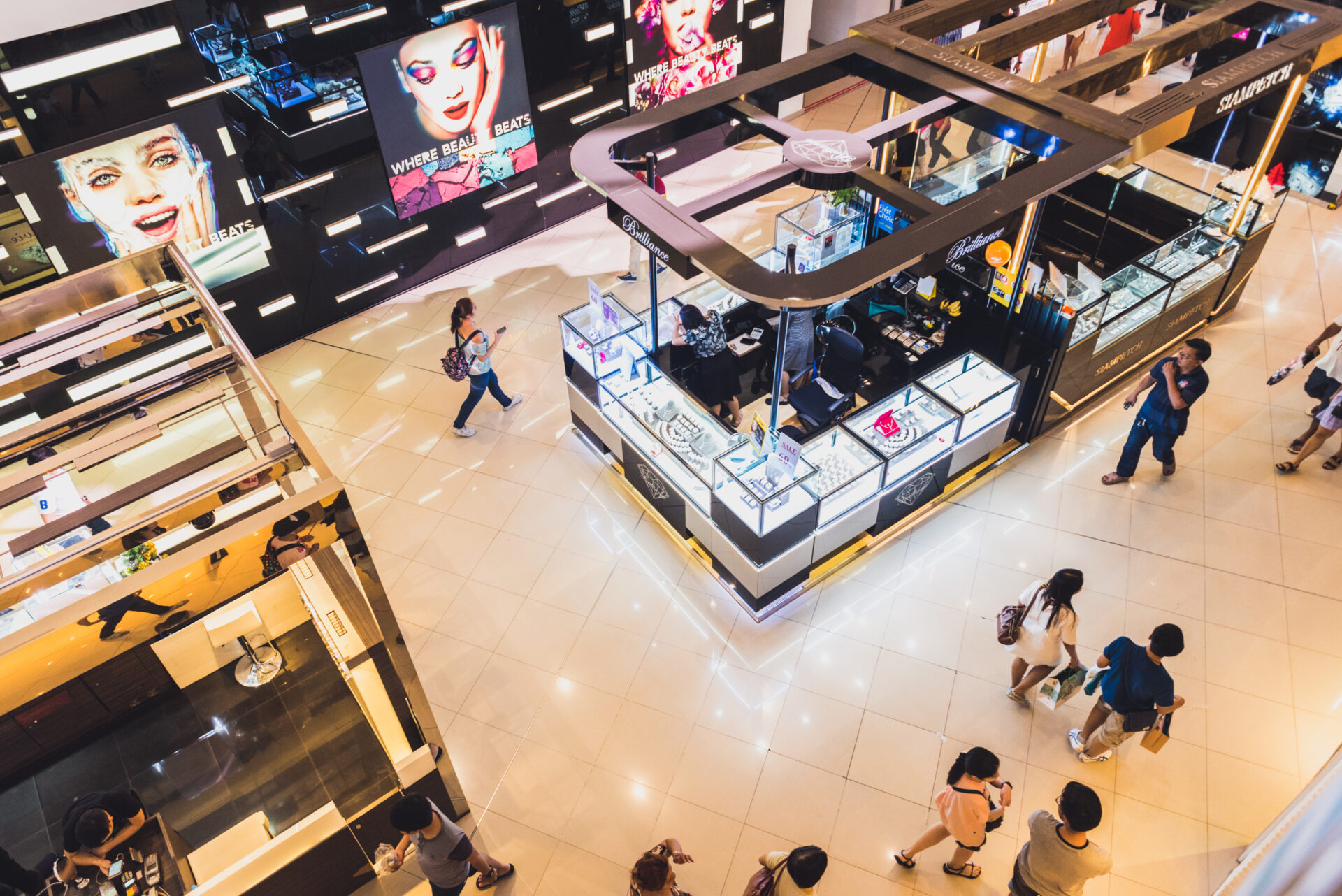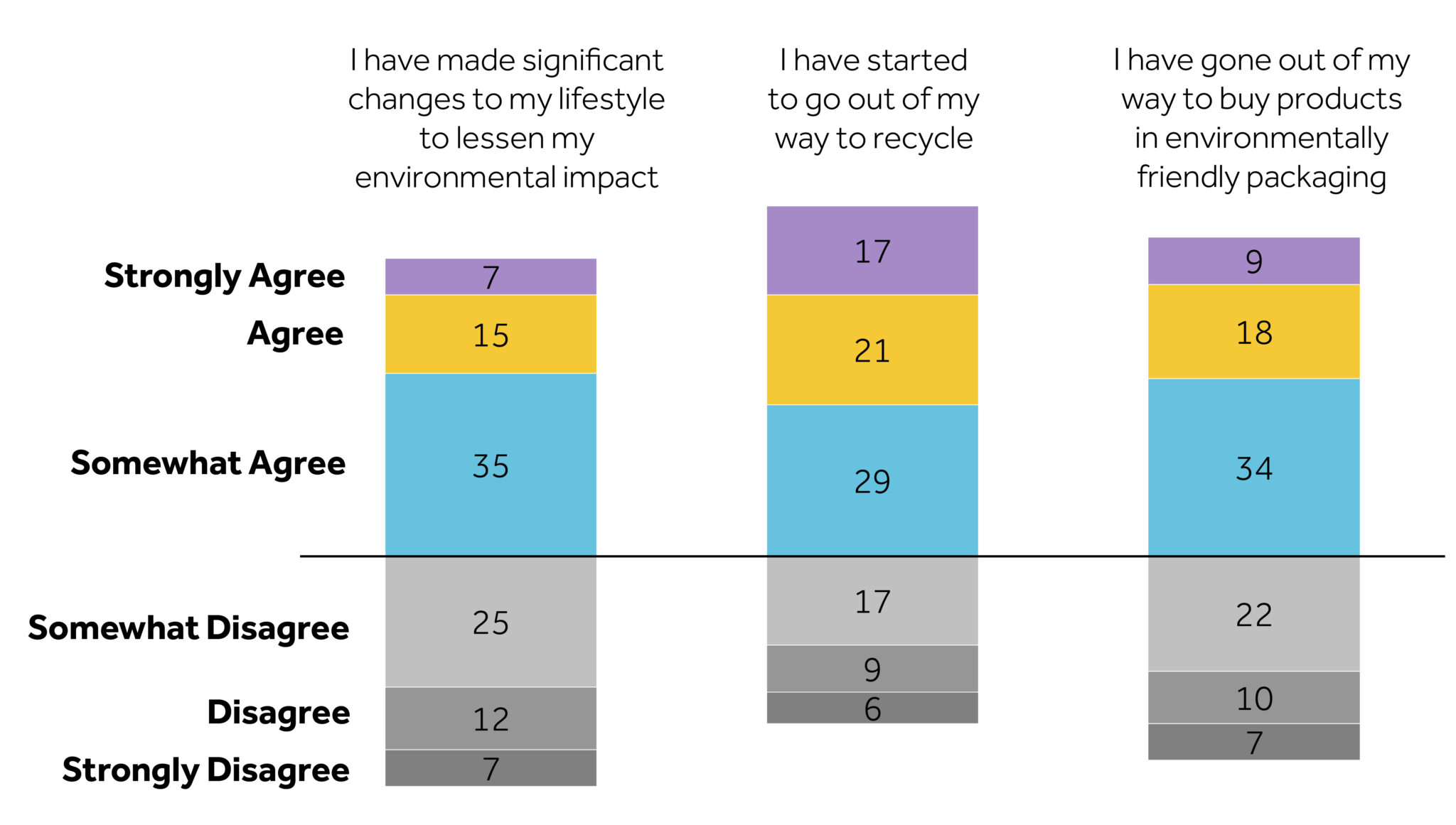
The Rise of Sustainable Shopping: Trends Reshaping Consumer Goods and Retail
In recent years, sustainability has evolved from a peripheral environmental concern to a central force shaping the consumer landscape. It has transitioned to a critical factor influencing consumer behaviors and expectations. This paradigm shift is not merely a fleeting trend but a profound transformation in how consumption is approached, with significant implications for the consumer goods and retail industries. As sustainability becomes an integral part of everyday decision-making, it reshapes the market dynamics, compelling businesses to adapt and innovate.
The Emergence of Sustainable Shopping
The increasing awareness of environmental issues and the substantial impact of human activities on the planet is driving a notable shift towards more conscious choices. This heightened awareness has spurred a significant boost in the demand for sustainable products. Modern consumers are not only seeking eco-friendly alternatives but are also holding companies accountable for their environmental footprints. This consumer-driven demand for transparency and responsibility is compelling corporations to integrate sustainable initiatives into their product lines and business practices. The interplay between informed consumers and proactive companies is creating a transformative movement towards a more sustainable future.
Chart 1: Consumer preferences for sustainability (% of respondents)
 Source: McKinsey Survey Consumer sentiment on sustainability in fashion
Source: McKinsey Survey Consumer sentiment on sustainability in fashion
Over the past decade, a significant increase in environmental consciousness has profoundly influenced consumer choices, leading to a surge in sustainable shopping practices. Studies and surveys consistently reflect this growing trend:
- Deloitte’s 2023 ConsumerSignals Survey reported that 46% of consumers across 23 countries purchased at least one sustainable good or service in April 2023. This marks a significant demand for sustainable products even amidst economic uncertainties, with 27% of consumers willing to pay an average premium for sustainability.
- In a survey conducted by McKinsey across more than 2,000 UK and German consumers, 67% consider the use of sustainable materials to be an important purchasing factor, and 63% consider a brand’s promotion of sustainability in the same way.
These findings underscore a clear and compelling shift that consumers are not only aware of global challenges but are also actively seeking to support companies that take meaningful action towards sustainability.
Key Trends in Sustainable Shopping Sector
The substantial shift towards sustainability is not only altering consumer behavior but is also transforming the landscape of the consumer goods and retail industries. Consumers are no longer just price-sensitive; they are increasingly value-conscious, seeking products that reflect their environmental and ethical concerns. This profound change is reshaping how businesses operate, from the materials they use to the transparency they offer in their supply chains. As sustainability becomes a critical factor in purchasing decisions, it is also driving innovation across the industry. Companies that once focused solely on profit margins are now investing in sustainable practices, recognizing that long-term success depends on their ability to meet the evolving expectations of their customers. Key trends driving this rise include:
The Surge in Eco-Friendly Packaging Solutions
The retail industry is witnessing a significant transition towards environmentally friendly packaging. A McKinsey & Company survey from 2022 indicates that 60% of consumers are prepared to pay more for goods packaged sustainably. Developments like compostable materials, biodegradable plastics, and reusable containers are responses to this growing demand. Companies are increasingly investing in research and development to create innovative packaging solutions that minimize environmental impact.
Rise of Transparent and Ethical Sourcing
Consumers are placing higher value on supply chain transparency. Brands like Patagonia and Everlane are leading the way by disclosing comprehensive details regarding their sourcing and production procedures. This transparency fosters customer loyalty and confidence, setting new benchmarks for the industry. Ethical sourcing practices not only enhance brand reputation but also contribute to sustainable development by ensuring fair labor practices and reducing environmental harm.
Micro-Manufacturing Momentum
The awareness of the advantages of local produce has grown, especially in the wake of the COVID-19 pandemic. Consumers are increasingly likely to support local firms to reduce the carbon footprint associated with long-distance transportation. A PwC survey reveals that 70% of respondents are willing to pay more for goods produced sustainably, including locally produced food and products with a lower carbon footprint. This trend encourages local economies and promotes sustainability by shortening supply chains.
Rise in Demand for Plant-Based and Eco-Friendly Goods
Environmental and health concerns are driving the demand for plant-based products. The global market for plant-based foods is expected to reach $113.1 billion by 2031, with a compound annual growth rate of 12.3% from 2024 to 2031. This surge is prompting manufacturers to innovate and diversify their product offerings to meet the growing consumer interest in sustainable and healthy alternatives.
Technological Developments in Smart Shopping
Technology is playing a crucial role in making shopping more sustainable. Apps like “Good On You” help consumers find eco-friendly items, track their carbon footprint, and make informed purchases by assigning sustainability ratings to fashion brands. Technological advancements are empowering consumers with information and tools to make responsible choices, thereby driving the market towards greater sustainability.
Emergence of ‘Thrift’ or Circular Fashion
The fashion industry, a significant contributor to environmental pollution, is witnessing a rise in the popularity of renting and second-hand fashion. Platforms like Poshmark and ThredUp promote recycling and reduce waste. By 2025, the global market for second-hand clothing is predicted to develop eleven times faster than the overall retail clothing industry, reaching $77 billion. This shift towards circular fashion is reducing waste and extending the lifecycle of clothing items, contributing to a more sustainable fashion industry.
Key Challenges Faced by the Sector
Sustainable shopping is increasingly resonating with consumers who are committed to making eco-friendly choices. However, for this positive trend to reach its full potential, several critical challenges need to be addressed. The high cost of sustainable products, regulatory shortcomings, and insufficient infrastructure are just a few of the obstacles that must be overcome. Addressing these challenges is essential to making sustainable shopping not only a popular choice but a truly transformative one. By focusing on these key areas, we can pave the way for a more accessible and impactful approach to sustainable consumerism:
High Costs of Sustainable Products
Sustainable products often come with higher production costs due to the use of eco-friendly materials and ethical practices. For sustainable choices to become mainstream, it is essential to find ways to make them more reasonably priced. This can be achieved through subsidies, tax incentives, or innovations that reduce production costs. Governments and businesses need to collaborate to create economic conditions that support the affordability of sustainable products.
Combatting Regulatory Gaps
Greenwashing, where companies make untrue or misleading environmental claims, remains a significant challenge. Robust regulations and standards, along with consumer education and third-party certifications, are essential to build trust and credibility in sustainable products. Regulatory bodies must establish and enforce stringent guidelines to prevent deceptive practices and ensure transparency.
Developing Sustainable Infrastructure
Significant investment is required to develop infrastructure for recycling, composting, and local production. Governments, corporations, and communities must work collaboratively to build facilities that support a sustainable shopping ecosystem. This includes establishing efficient recycling systems, promoting composting initiatives, and encouraging local production to reduce transportation-related emissions.
Limited Consumer Awareness and Engagement
Despite the growing interest in sustainable shopping, many consumers remain unaware of the true environmental impact of their purchases. This lack of awareness can lead to complacency or misinformed choices, slowing the adoption of sustainable practices. Educational campaigns and transparent labelling are critical to raising awareness and engaging consumers. By providing clear and accessible information about the sustainability of products, consumers can make more informed and environmentally responsible decisions.
Supply Chain Challenges
The complexity of global supply chains poses a significant hurdle to sustainable shopping. Ensuring that every step of the supply chain is from raw material extraction to final product delivery meets sustainability standards is a daunting task. This challenge is exacerbated by the lack of visibility and traceability in many supply chains. To address this, companies need to invest in technologies that enhance supply chain transparency and work closely with suppliers to ensure ethical and sustainable practices are upheld throughout the entire production process.
Conclusion
The retail and consumer goods industries are undergoing a significant transformation due to the rising demand for sustainable products. Driven by a growing preference for plant-based foods, recycled fashion, ethical supply chains, and eco-friendly packaging, this shift is redefining industry standards. Despite existing challenges, the commitment to sustainability is evident and increasing. Retailers and manufacturers are striving to meet consumer demand and contribute to a more sustainable future by embracing these trends.
Looking ahead, the future of sustainable shopping is promising. The trend is expected to grow steadily among future generations, who are increasingly prioritizing environmental responsibility in their purchasing decisions. As the landscape continues to evolve, it is imperative for stakeholders across the board to stay informed and proactive. By fostering a culture of sustainability, promoting ethical practices, and investing in sustainable infrastructure, the consumer goods and retail industries can play a pivotal role in shaping a greener future. The potential benefits for the environment, society, and the economy are immense. Embracing this shift will not only meet the growing consumer demand but also contribute to a sustainable and prosperous future for all.
References:
- Everlane (2023)
- Good On You (2023)
- Market Research Future (2023)
- Patagonia (2023)
- Deloitte Insights (2023)
- McKinsey & Company (2022)
- ThredUp (2022)
- PwC (2021)




